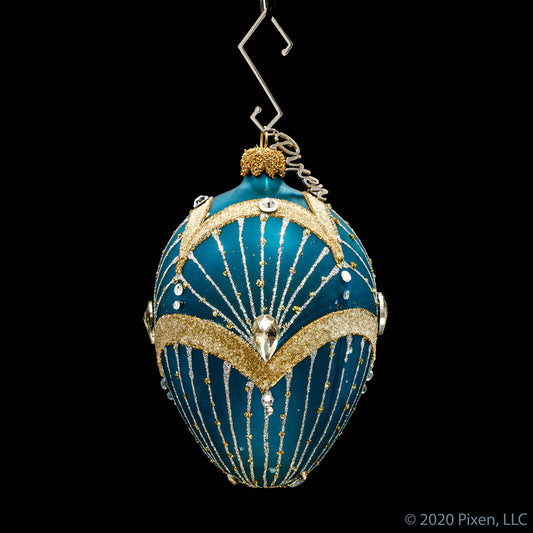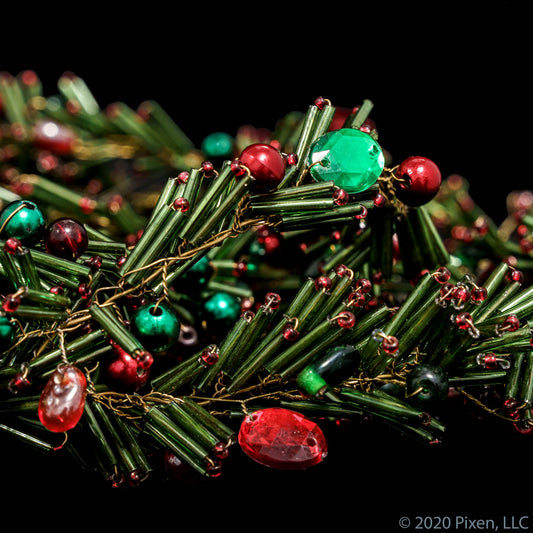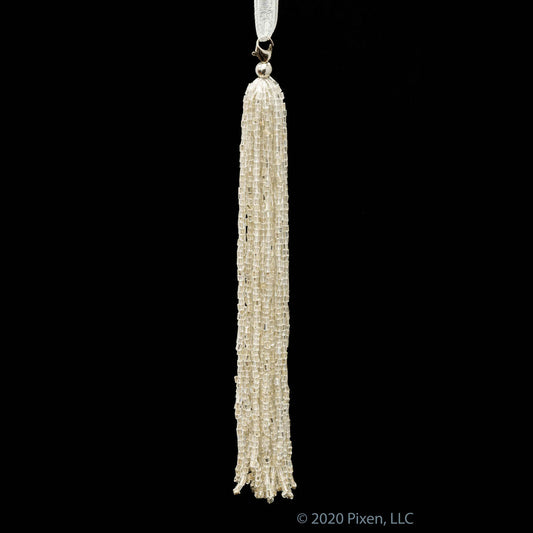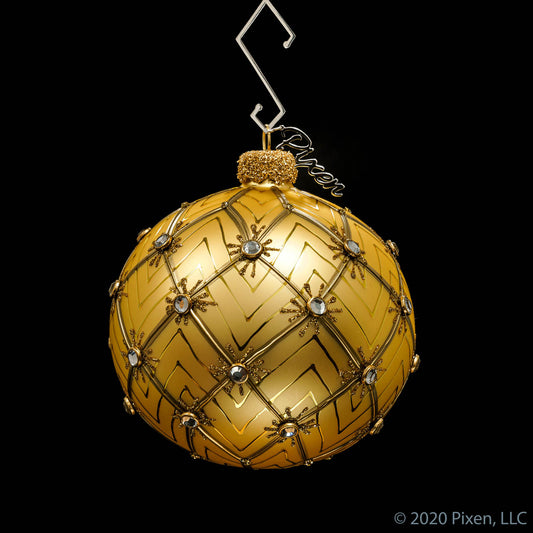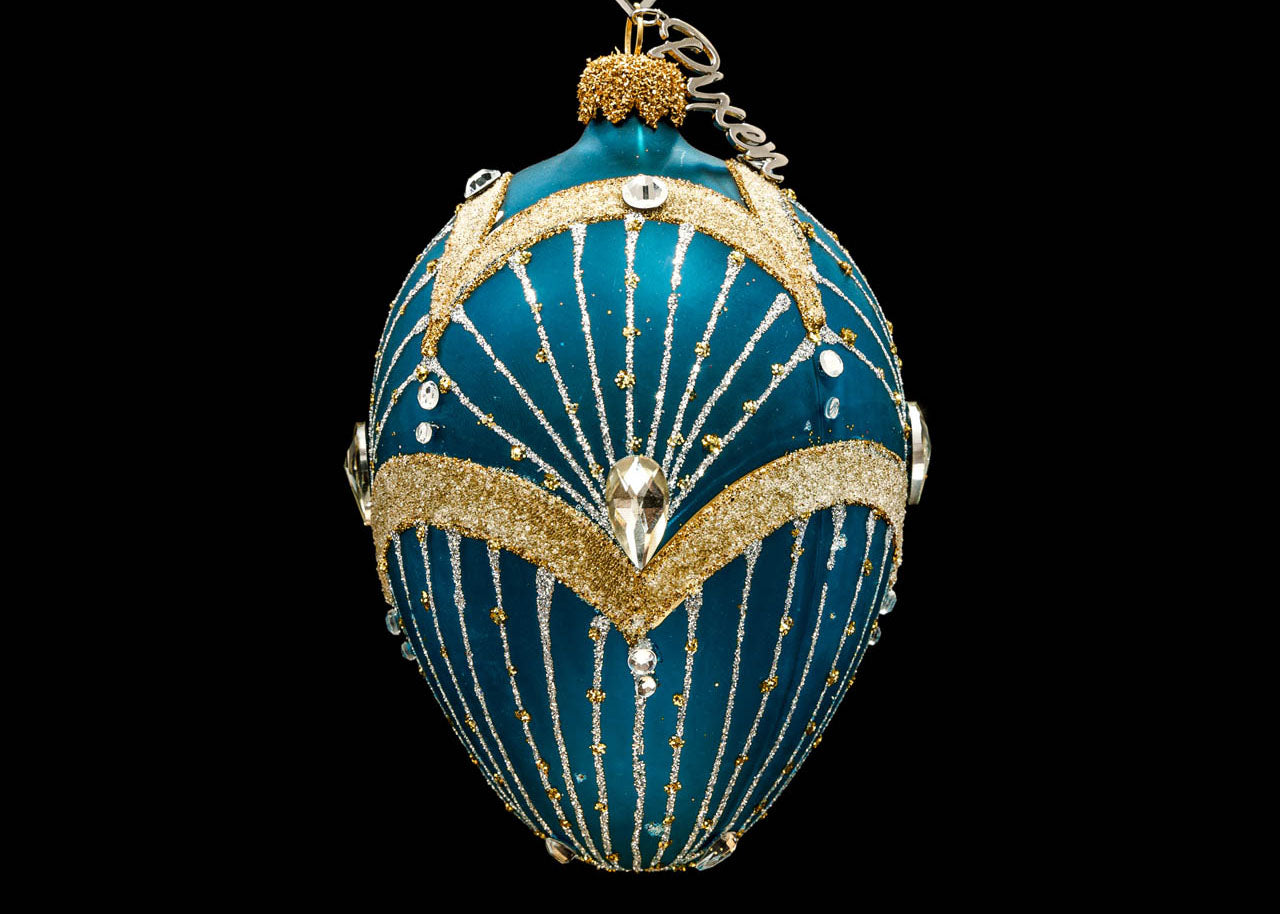
Art Deco Christmas and Holiday Design
The Art Deco movement has had a lasting impact on art, design and interior decor. Let's look at the features that make Art Deco design timeless, for the holidays as well as everyday decorating.
How did Art Deco impact Christmas and holiday design?

During the early 1920’s, architecture, fashion, and product design began to share design elements that came from newly developed manufacturing techniques. Lines could be mechanically produced, creating even, fine marks. Surfaces could receive consistently smooth textures. Patterns could repeat, created by an industrial press. These methods allowed designers to use the unique features of mechanization as part of the finished aesthetic of their designs. Though mechanization was the influence, most products of this era were crafted largely by hand with the aid of machinery including Christmas decor, ornament design and holiday decoration.
The breadth and depth of designer's interest in using mechanization was on full display during the 1925 Exposition Internationale des Arts Décoratifs et Industriels Modernes held in Paris, France. The exhibit brought together examples of architecture, fashion design and the decorative arts that shared the influence of industrialization. Over 16 million art enthusiasts were in attendance. For the first time in a single exhibit the world saw a unified showcase of the burgeoning Art Deco trend.
The 1925 World’s Fair set the tone for the next fifteen years, cementing a passion for modernist design influenced by the Art Deco movement. Opulence, symmetry, precision, and style were the features of the day.
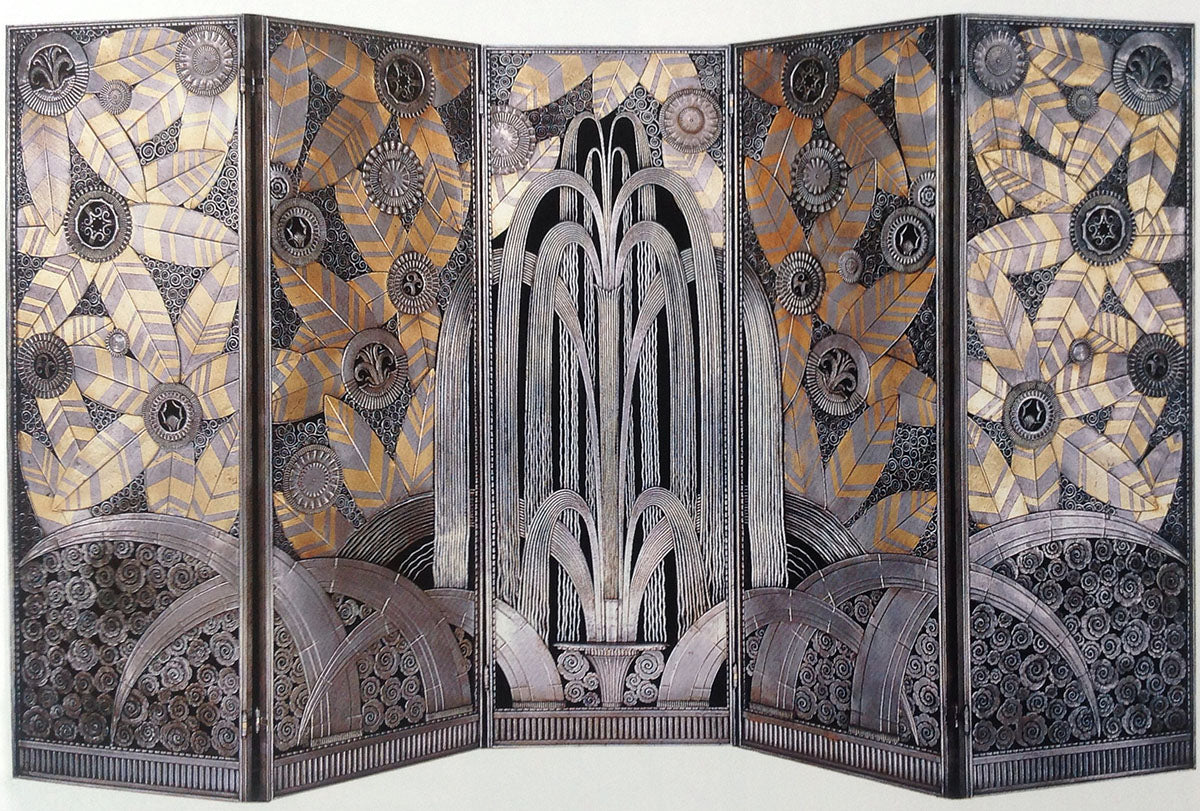
"Oasis" by Edgar Brandt.
This metal Grille was exhibited at the 1925 Exhibition of Decorative Arts. It exemplifies mechanical precision in both design and manufacturing.
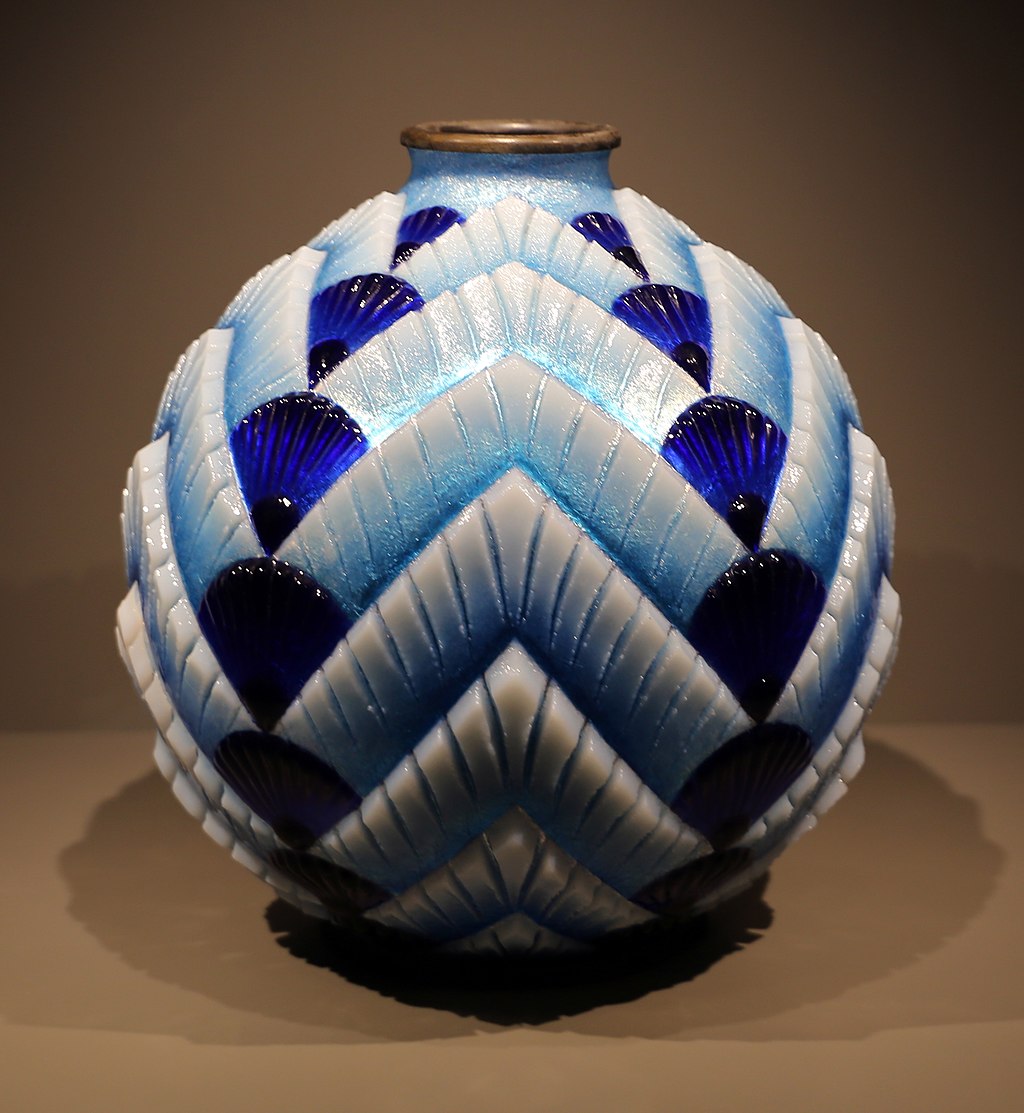
Limoges vase by Camille Fauré
When these aesthetics hit art and fashion they created a sensation. The opportunity to create a stylized look with simple lines and geometric shapes captured the eye and created a frenzy for new goods.
Surprisingly, though these designs were influenced by manufacturing, they were most often handcrafted, each feature fitting its design in a unique way and rarely becoming mass produced. If an interested buyer missed the opportunity, it was lost until the design hit the secondary market, often at a significant markup.
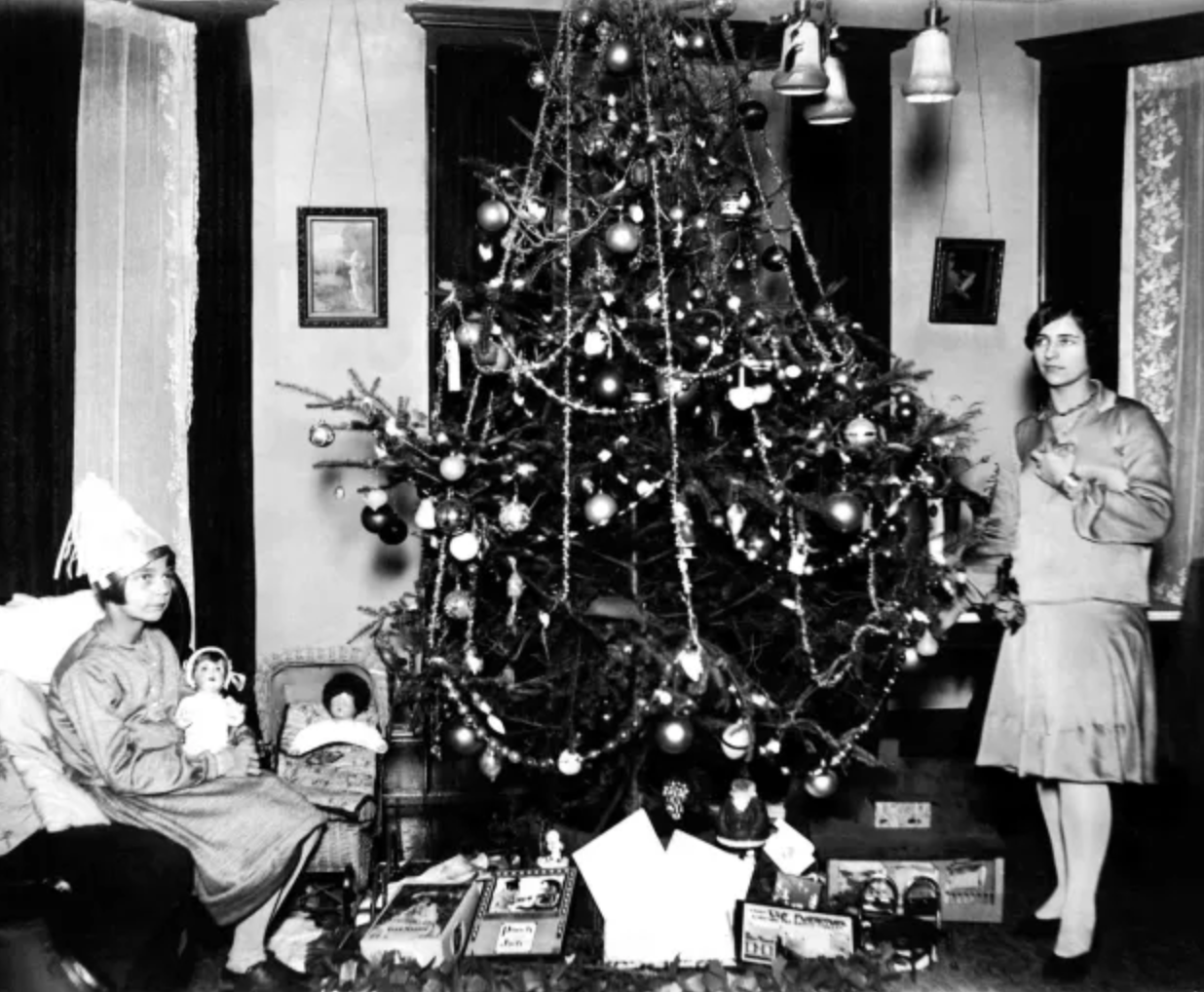
Two Girls with a Christmas Tree and Presents
But what of Christmas? Tinsel was a popular means to decorate a tree. Beaded strands, glass ball garlands, popcorn garlands and glass orbs were also common.
Image CC Public Domain
House of Pixen Christmas and holiday designs Include many art deco features.
Shop Art Deco Influenced Design
-
Paradigm, an Elegant Christmas Ornament by Pixen
Regular price $80.00 USDRegular priceUnit price per -
Christmas Chunky Bugle Bead Garland by House of Pixen
Regular price $30.00 USDRegular priceUnit price per -
Long Silver Glass-Bead Christmas Tassel by Pixen
Regular price $7.00 USDRegular priceUnit price per -
Sol Glass Christmas Ornament by Pixen
Regular price $88.00 USDRegular priceUnit price per

